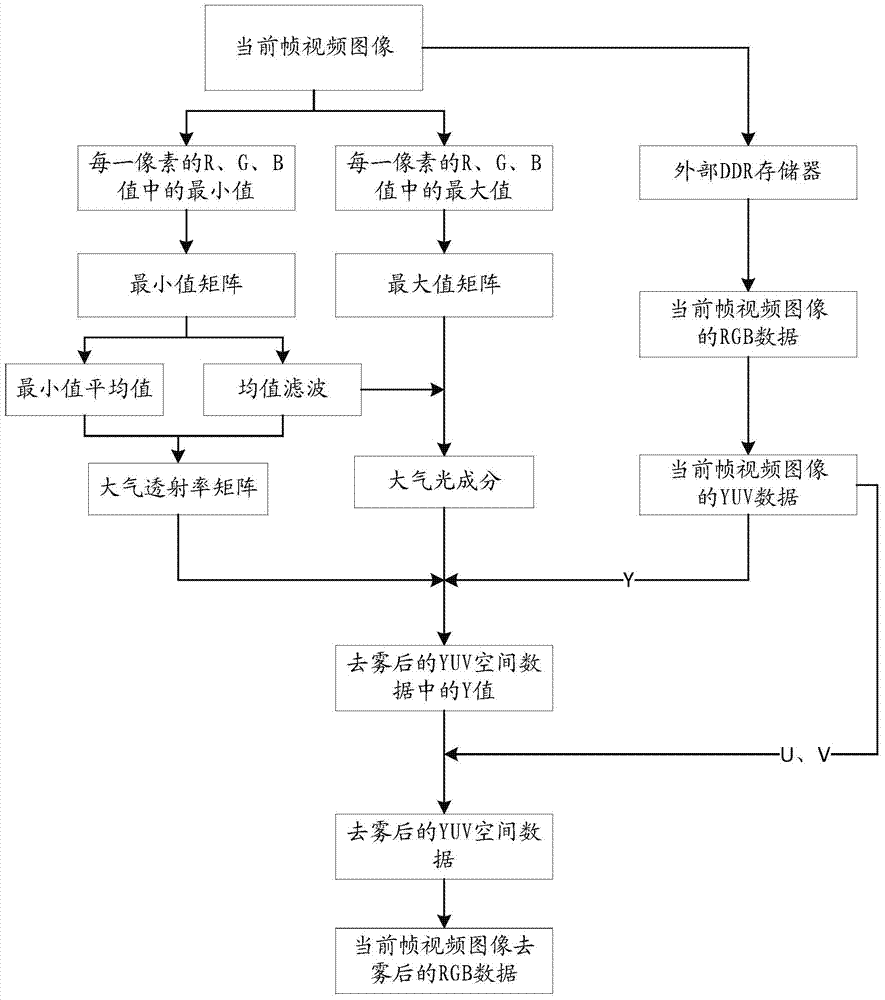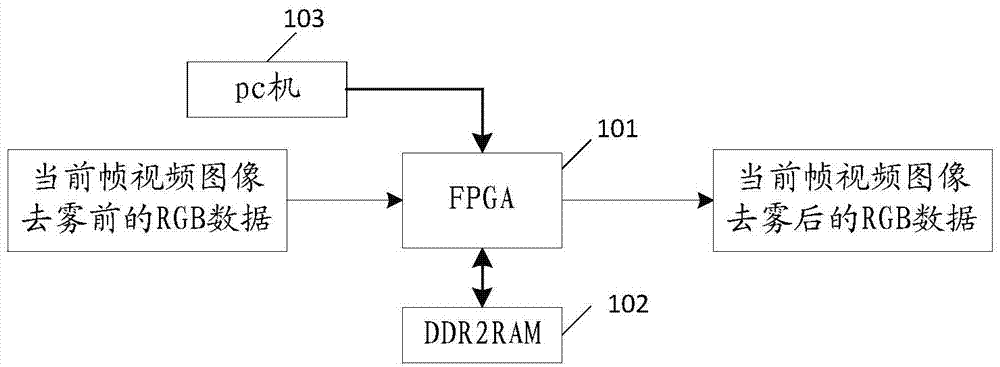Video defogging method and system based on FPGA
A video and video image technology, applied in the field of FPGA-based video dehazing methods and systems, can solve the problems of slow algorithm speed and large amount of calculation, and achieve the effect of delaying image time, satisfying real-time processing, and improving image quality.
- Summary
- Abstract
- Description
- Claims
- Application Information
AI Technical Summary
Problems solved by technology
Method used
Image
Examples
Embodiment Construction
[0037] In order to make the object, technical solution and advantages of the present invention clearer, the present invention will be further described in detail below in conjunction with the accompanying drawings and embodiments.
[0038] The present invention proposes to defog video through FPGA. Such as figure 1 As shown, the method specifically includes the following steps:
[0039] Step S1: Receive and store the current frame video image M(x), and at the same time, detect the maximum and minimum values of the R, G, and B values of each pixel in the current frame video image to obtain the maximum value matrix Max(x) and Minimum value matrix Min(x). For example, if the R, G, and B values of a certain pixel are 223, 114, and 51 respectively, then the maximum value of the pixel is 223, and the minimum value is 51. The maximum value of each pixel constitutes a maximum value matrix Max(x), and the minimum value of each pixel constitutes a minimum value matrix Min(x). ...
PUM
 Login to View More
Login to View More Abstract
Description
Claims
Application Information
 Login to View More
Login to View More - R&D
- Intellectual Property
- Life Sciences
- Materials
- Tech Scout
- Unparalleled Data Quality
- Higher Quality Content
- 60% Fewer Hallucinations
Browse by: Latest US Patents, China's latest patents, Technical Efficacy Thesaurus, Application Domain, Technology Topic, Popular Technical Reports.
© 2025 PatSnap. All rights reserved.Legal|Privacy policy|Modern Slavery Act Transparency Statement|Sitemap|About US| Contact US: help@patsnap.com



